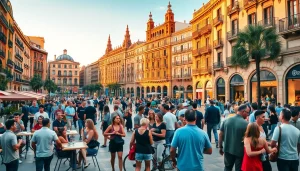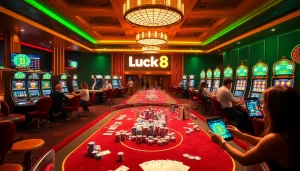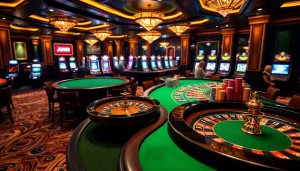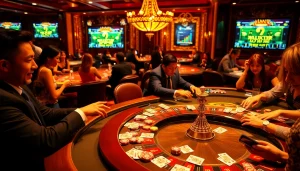Expert Custom Exhibition Stand Builder UK: 5 Essential Tips for 2023
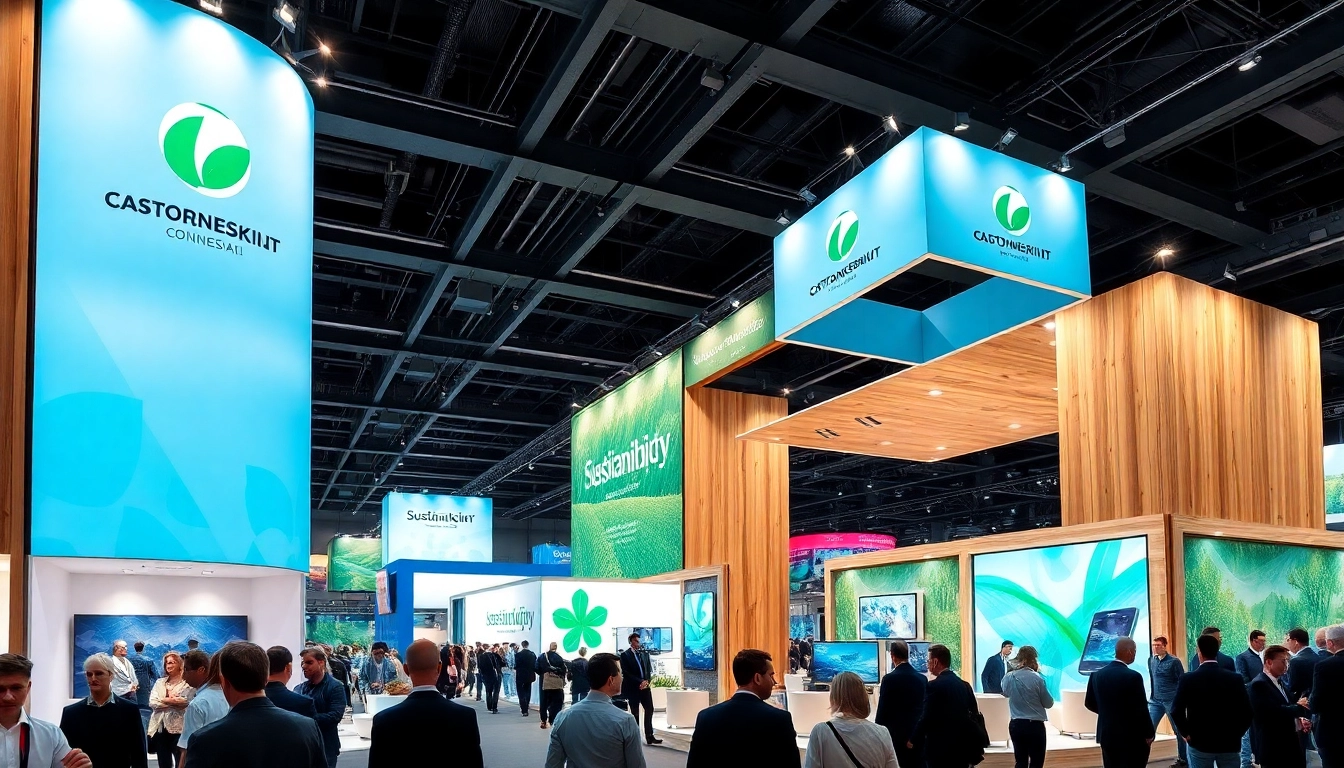
Understanding Custom Exhibition Stands
What Is a Custom Exhibition Stand?
A custom exhibition stand refers to a personalized display that businesses use during trade shows, exhibitions, and other events to showcase their products or services. Unlike standard shell schemes, which are often generic and unmodifiable, custom stands are designed specifically for a brand’s messaging and goals, allowing for an immersive brand experience. These stands can take a range of forms, from modular units that can be reconfigured to elaborate, bespoke designs that reflect the company’s identity and offerings. With the right custom exhibition stand builder UK, businesses can create visually stunning and functional environments that capture the attention of potential clients and stakeholders.
Benefits of Choosing a Custom Stand
Opting for a custom exhibition stand comes with numerous advantages:
- Brand Identity: Custom stands allow companies to showcase their unique brand identity, effectively communicating their message and aesthetic.
- Flexibility and Functionality: These stands can be designed to fit specific exhibition spaces and accommodate various functionalities, from product displays to meeting areas.
- Increased Engagement: A well-designed custom stand can attract more visitors, enhancing brand visibility and engagement.
- Quality and Durability: Often constructed from high-quality materials, custom stands are more durable and can be adapted for multiple uses, making them cost-effective in the long term.
- Innovative Design: Custom stands give businesses the freedom to utilize creative designs that can include technology, lighting, and multimedia elements to enhance visitor experience.
Common Materials Used
Creating a custom exhibition stand involves a variety of materials, and the selection often depends on the design requirements, budget, and intended use of the stand. Some commonly used materials include:
- Wood: Providing a natural, warm feel, wood can be used for structures and displays but requires proper finishing to enhance durability.
- Fabric: Lightweight and versatile, fabric banners can create stunning visuals when printed and are easily transportable.
- Metal: Metals like aluminum or steel add strength and can contribute to sleek, modern design aesthetics.
- Plastic and Acrylic: These materials are often utilized for signages and lightweight structures, thanks to their flexibility and clarity.
- Glass: Used in upscale designs, glass can add elegance and allow for transparency in product display.
Choosing the Right Custom Exhibition Stand Builder UK
Evaluating Experience and Portfolio
When selecting a custom exhibition stand builder in the UK, it is crucial to assess their experience and portfolio. Look for builders who have a proven track record of creating successful stands for companies within your industry. A strong portfolio will showcase a variety of designs and customizable solutions that demonstrate their capacity to meet different client needs and preferences.
Moreover, it’s beneficial to seek builders who possess industry-specific knowledge, as they can provide more tailored advice and insights. Attending trade shows and exhibitions can also offer a glimpse into potential builders’ work and help gauge their creativity and effectiveness in real-world settings.
Questions to Ask Potential Builders
Before finalizing a custom stand builder, consider posing the following questions to gauge their capabilities:
- What is your design process? Understanding the workflow from concept to execution can help you ensure the builder aligns with your vision.
- Can you provide references or case studies? Testimonials from past clients can offer valuable insights into their reliability and performance.
- What is the estimated timeline for delivery and installation? Knowing their timeframe will help you plan your exhibition schedule accurately.
- What is included in your pricing model? Understanding costs beforehand, including potential extra charges, can aid in budget management.
- How do you handle modifications during the project? Flexibility and responsiveness to changes can be critical for ensuring the final stand aligns with your expectations.
Understanding Pricing Models
Cost transparency is key when working with a custom exhibition stand builder. Pricing models may vary based on factors such as design complexity, materials used, and size of the stand. Typically, builders might offer the following pricing structures:
- Fixed Pricing: A flat fee based on the outlined project scope. This option provides budget certainty.
- Hourly Rates: Some builders charge based on hours worked, which can be beneficial for smaller projects where the scope is less defined.
- Tiered Pricing: Different service levels with varying price points, allowing clients to select services that align with their budget.
It’s important to compare quotes from multiple builders, while also ensuring that you’re comparing similar services to avoid any discrepancies. Always ask for a detailed breakdown of costs to understand where your budget will be allocated.
The Design Process: From Concept to Reality
Key Steps in Custom Stand Design
The journey to a successful custom exhibition stand begins with a comprehensive design process. Key steps typically include:
- Briefing: Collaborative discussions gather critical information about the brand message, target audience, and goals for the exhibition.
- Research and Ideation: The design team conducts research to brainstorm innovative concepts, analyzing competitors’ stands and exhibition trends.
- Preliminary Sketches: Initial sketches or digital designs are submitted for feedback, allowing adjustments early in the process.
- 3D Visualization: Advanced 3D models help visualize the stand’s layout, giving clients a clear picture of the final product.
- Final Renderings: Following approval, detailed final designs are prepared, outlining materials and construction methods.
Collaborating with Designers
Effective collaboration between clients and designers is paramount throughout the design process. Clear communication regarding vision, goals, and preferences will result in a more tailored and successful outcome. Regular check-ins and feedback loops are essential, ensuring that each design phase aligns with the brand’s expectations.
Working together on design iterations allows for the exploration of different creative avenues that might otherwise be overlooked. Utilize technology such as virtual reality for real-time feedback, giving insight into viewer experiences before the physical build occurs.
Incorporating Brand Identity
Your exhibition stand should be a natural extension of your brand identity. Elements such as color schemes, logos, typography, and messaging should all be harmonized to resonate with the target audience. Including interactive components—such as touch screens displaying brand stories or gamified experiences—can further engage visitors and strengthen brand recall.
Consider also how the physical space can reflect your brand. For example, if sustainability is a core value, incorporating eco-friendly materials into your design and stand construction process can convey this commitment effectively.
Execution: Building and Setting Up Your Stand
Preparing for Installation Day
The installation phase is crucial for turning design concepts into reality. Proper preparation encompasses scheduling the installation, ensuring all materials are on-site, and having a dedicated team ready for assembly. A pre-installation meeting should confirm roles within the team and review the installation timeline to avoid delays on the day of the event.
If possible, conduct a pre-build setup in the workshop to iron out any potential issues before the actual event installation. This approach minimizes the risk of complications on-site and helps create a smoother experience.
Understanding Logistics and Regulations
Exhibitor logistics is complex, requiring an understanding of venue regulations, labor contracts, and health and safety standards. Familiarize yourself with the specific requirements of the venue, including load-in times, weight limits for materials, and regulations regarding electrical work or structural support.
Prepare a detailed logistics plan covering transportation schedules, installation and dismantle times, and coordination with venue staff, which can alleviate headaches as the event approaches.
Managing On-site Adjustments
No matter how meticulously planned, there may be adjustments needed on-site. Having a flexible approach, along with a skilled team that can problem-solve in real-time, will ensure a successful outcome. Consider training team members ahead of time, so they are prepared for common issues such as last-minute changes or equipment failures.
Regular site inspections during the setup will allow for immediate identification and rectification of problems, providing peace of mind as the exhibition day draws nearer.
Measuring Success: Post-Event Analysis
Key Performance Metrics to Consider
Post-event analysis is vital to evaluate the success of your exhibition stand. Metrics may include:
- Total Leads Generated: Measuring the number of new contacts gathered can help assess the ROI of participating in the event.
- Engagement Levels: Track participation in activities at your stand, such as demonstrations or contests, to analyze visitor interest.
- Brand Awareness: Conduct surveys before and after the event to measure increases in brand recognition and public perception.
- Sales Growth: Following the event, monitor sales trajectories to determine if there was an uptick linked to exhibition participation.
Gathering Visitor Feedback
Direct feedback from visitors can provide invaluable insights into how your stand was perceived. Utilize post-event surveys and informal interviews to gauge the audience’s thoughts on various aspects of your stand, including design, messaging, and overall atmosphere. This feedback can help highlight strengths and illuminate areas for improvement in future exhibitions.
Planning for Future Exhibitions
The knowledge gained from post-event analyses should feed into future planning stages for exhibitions. Review performance metrics, visitor feedback, and logistical lessons learned to inform strategic decisions for upcoming events. Continuous improvement is essential for achieving evolving business goals and maintaining a competitive edge.

